You are here
Shelley’s Frankenstein: a Feminist Novel?
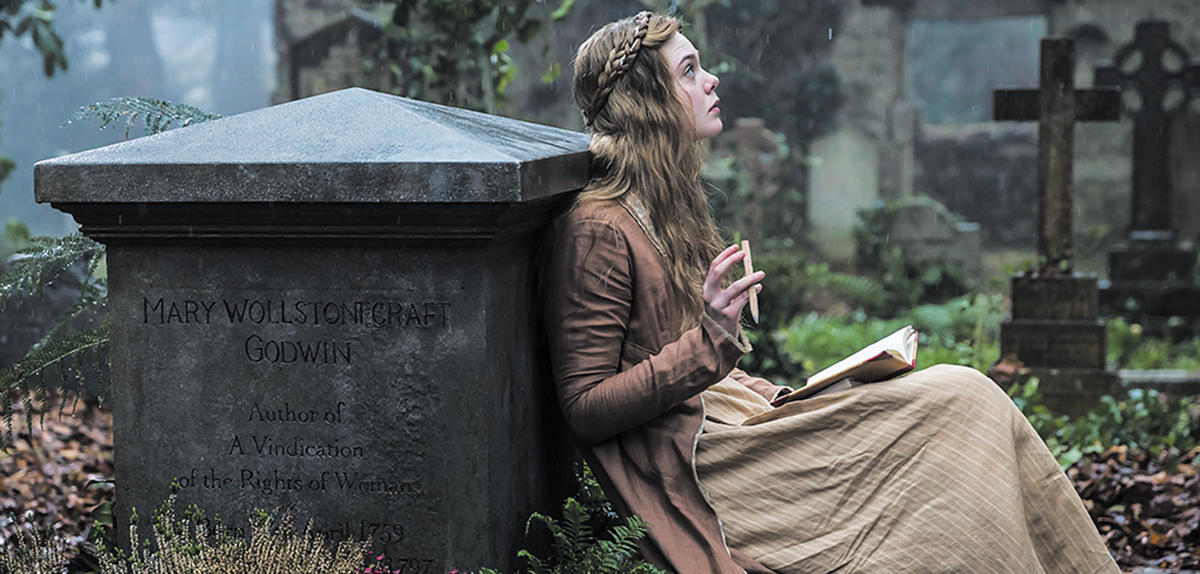
The film by Haifaa Al-Mansour portrays Mary Shelley as a lover of individual freedom and a single-minded woman, whether in terms of love or in her conquest of an art hitherto occupied almost solely by men: literature. Do you feel that this is an accurate depiction?
Christine Berthin:1 Overall, the film stays very close to the historic truth. Yet I feel that the temperament of young Mary (née Wollstonecraft Godwin) has been modernized to some extent in this portrait, which has undoubtedly borrowed certain traits from modern feminism. In July 1814, on the eve of her 17th birthday,2 she ran off with Percy Bysshe Shelley, then a 22-year-old3 poet, already married and a father, electing to weather the moral storm and live “according to her desires,” as the film puts it. Nevertheless, she wasn’t quite as assertive as the biopic suggests. She was a young girl who scorned the consequences of her acts, in exactly the same way as Victor Frankenstein4 when he gave life to his creature… Certainly she was exulted at the age of 16, but she was far less by the time she turned 18. After the scandal, she had only one desire, namely to return into the fold of society and gain acceptance. She achieved this much more easily in her role as Percy Shelley’s widow than during her life with the poet, whom she married in 1816 and who drowned at 29. As she grew older, she almost became a Victorian lady…
In one scene, she stands up to Lord Byron over his sexual treatment of women, flying to the defense of Claire Clairmont (daughter of the second wife of Mary Shelley’s father). Does this ring true to you?
C.B.: In my view, this scene is not entirely historically plausible. I think that above all, Mary Shelley was consumed by her relationship with Percy Shelley. She followed him because of love, but she very quickly found herself disadvantaged by the libertarian lifestyle he championed, in particular as a result of his string of mistresses, while she most likely sought no other lovers, choosing instead, I imagine, to remain faithful to him.
Mary Shelley’s struggles took place in a conservative era during which critics regretted that she had pushed aside the inherent “fair nature of her sex.” Isn’t the simple fact of writing such a novel in 1816, at the tender age of 18, enough to make her a feminist ahead of her time?
C.B.: Not really. Writing came naturally to her, since her parents were highly cultured progressives. In particular, her mother, Mary Wollstonecraft, published a proto-feminist essay in 1792 entitled A Vindication of the Rights of Woman, in which she expressed the need for recognition of women, primarily in terms of education, so that they might not be limited to a life of mere singing and sewing. But we cannot really speak of feminism in the modern sense: in her thinking, women were not seeking equality with men but simply a position in society that did not necessarily relegate them to the home, where they were isolated and completely dependent on their husbands financially, socially and intellectually. With regard to her own “daughter,” Mary Shelley followed a similar path but one that involved a more subtle approach: she gave birth to a new type of novel, which was derived from the Gothic novelFermerA literary genre, and forerunner of the thriller, in which the narrative, frequently layered, depicts terrifying characters (ghosts, monsters, etc.) generally threatening a woman or a young girl in a terrifying location. It reached its peak in 18th century England. Horace Walpole’s The Castle of Otranto, published in 1764, is considered the first work of this type. (the exclusive preserve of women) but went beyond it, a novel in which a monster, deprived of education, also seeks to claim his place in society…
How does the novel deal with these themes, the right to education and the right to a place in society?
C.B.: The monster is rejected by its “father,” Victor Frankenstein, and must learn for itself, or by eavesdropping through a hole in the wall of the cabin where it hides. This is the exact opposite of the experience of Mary Shelley, who was lucky enough to enjoy an open education covering a far wider diversity of subjects than was common for young girls of her time. The monster, meanwhile, is excluded, hunted down, and misunderstood, and it embodies the voices of all the women in the tale, who are marginalized and unable to express themselves.
For example, Margaret Saville (“M.S.”, like Mary Shelley), the sister of Walton (the explorer), never speaks. She is the permanently excluded woman, who receives letters from others recounting their adventures. And Elizabeth, Victor’s adoptive sister, whose principal role is to become his wife, is killed. Mary Shelley thus paints a lucid portrait of the romantic era when she suggests in this way that women are relegated to the sidelines of history. Her novel is thus an astute critique of society, of how the world is divided, and of the quest of men for dominion over everything: artistic creation, science, travel and discovery, and so on.
In the 18th century, poetry and its “great romantics,” like Percy Shelley, was almost exclusively populated by male authors, while the Gothic novel, with its ghosts and murderous creatures, was dominated by women. Why was it that this particular literary genre enabled them to become writers, in some cases with great success, like Ann Radcliffe?5
C.B.: This genre was indeed a feminine tradition, though not necessarily feminist. The Gothic novel, the airport book of the age, was perfectly in line with the feminine experience: the story is a metaphor of the pathway to “becoming a woman,” of moving out of the father’s house and into that of the husband, with all the attendant terror that might result. The typical Gothic plot typically revolves around a pure, virginal and ethereal young woman at the mercy of villains bent on robbing her of her life, her virtue, her wealth, and so on. The novel is usually set in a convent, a crypt or a haunted castle, which is a veiled representation of the house. The heroine wanders from room to room in a bid to escape the villains and simply survive. By the end, all the terrors have subsided, and, after the darkness, rays of light finally flood in: the young woman is able to enter society and marry the husband she so deeply needs. This was the main literary style in which a woman could write openly.
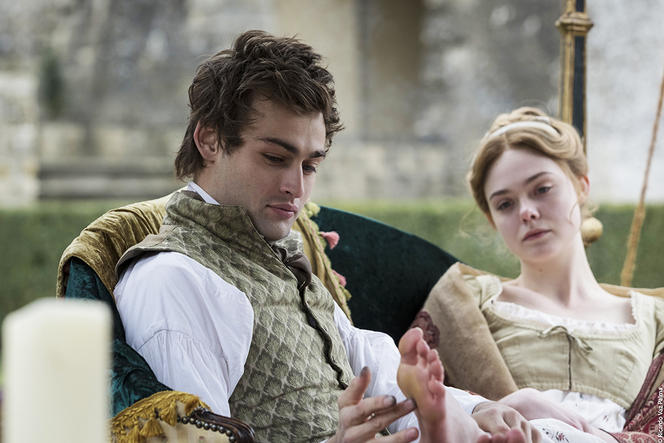
So Frankenstein, published 200 years ago in 1818, even though occasionally considered as one of the last of the Gothic novels, is above all the first work of science fiction…
C.B.: On reading the manuscript, the editors immediately understood that in spite of its terrifying atmosphere, the murderous creature and the layered narrativeFermerA narrative within which another narrative is recounted, within which a further narrative may be recounted, and so on., typical of the Gothic style, Frankenstein was completely atypical. In contrast with a fragile young woman chased by villains, Victor Frankenstein is a man totally in control of his destiny. He is indeed pursued, but in the end, we are no longer sure which of the two, he or the creature he has created, is hunting down the other. Furthermore, it becomes difficult to distinguish the victim from the executioner. Above all, while the supernatural, miracles and magic are all key ingredients of the Gothic plot, Mary Shelley actually invented the science-fiction novel and replaced these various elements with science: it was electricity that enabled Victor to breathe life into his creature.
At the start of the 19th century, a number of scientists seriously envisaged the possibility of bringing a corpse back to life using electricity, based on the work of Italian doctor and physicist Luigi Galvani in the 1780s. Shelley was greatly interested in this subject and she was present during a series of lively philosophical conversations between Percy Shelley and Lord Byron concerning such questions. As depicted in one scene in the film, they attended a demonstration of galvanism involving the use of electrical shocks to provoke muscular contractions in dead animals. This futuristic vein that she had created would become even starker in The Last Man published in 1826.
Since Frankenstein was not a pure Gothic novel, publishers refused to publish it under the name of Mary Shelley, a woman…
C.B.: One of the only ways for women of the time to be published was to write an openly Gothic novel. Otherwise, the work would often be published anonymously, occasionally bearing no more than the author’s initials. In 1818, Mary Shelley therefore decided to publish an anonymous edition, only claiming authorship openly for her work in 1823.
Finally, in the 1831 edition, she wrote a new introduction (it was Percy Shelley who wrote the preface to the first edition, a fact that previously contributed to casting doubt on her authorship of the novel). In this introduction, Mary Shelley refers to the work as her “hideous progeny” which she bids to “go forth and prosper.” Her extremely strong claim is directed not only towards society but also towards the world of science, at precisely the time when medicine, practiced exclusively by men, was indeed beginning to usurp the role of women in conception and childbirth. Such was the great responsibility of this role that numerous texts predating the century of the Enlightenment stated that if a pregnant woman saw or even dreamed of a hirsute creature, she would give birth to an equally monstrous child!
The idea of the creature, engendered by a male scientist, came to Mary Shelley during a stormy night in 1816, in the villa rented by Lord Byron and in which she and her husband often stayed as guests. In the film, the young protagonists had no idea why the sky outside had become so tenebrous…
C.B.: Yes, these facts are accurately portrayed in the film. The two lovers, Percy and Mary, accompanied by Claire Clairmont, spent many evenings at Villa Diodati, a mansion near Lake Geneva rented by Lord Byron, during the dark and stormy summer of 1816. This “year without a summer” was the consequence of the eruption of Mount Tambora6 in Indonesia, which adversely affected the worldwide climate, although they, like the rest of their contemporaries, were unaware of this process.7 They found themselves confined to the house, often in almost complete darkness, with an imminent feeling that the end of the world was upon them, possibly because “Mankind had altered nature.” In this post-apocalyptic atmosphere, Lord Byron suggested that his guests amuse themselves with a writing contest in which each was to write a ghost story. It is fascinating to note that this same year saw the beginnings of the two greatest literary myths of the 19th century, Victor Frankenstein’s monster and the vampire, whose first noteworthy literary incarnation was in the novel The Vampyre by John Polidori, who himself had also been a guest at Villa Diodati the same year.
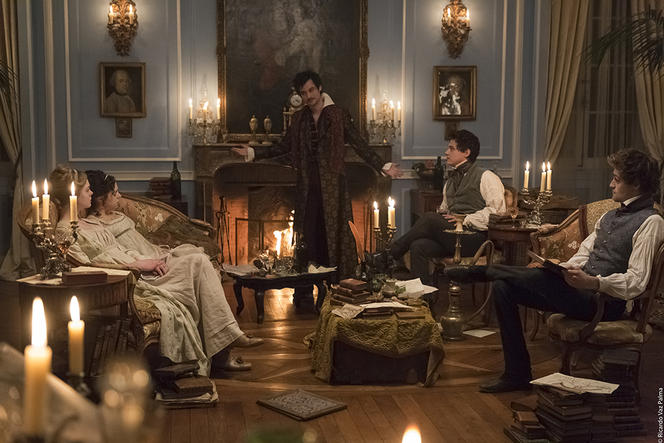
The abuses of science, of the scientific demiurge as a victim of technical progress that moves beyond his control, transgression and hubrisFermerFor the ancient Greeks, this notion denotes everything in the conduct of human beings that is considered as immoderate and proud by the gods, and which calls for vengeance on their part. are the most frequently discussed themes in the book, particularly in recent years by critics of transhumanismFermerAn international movement in favor of the use of sciences and techniques such as artificial intelligence and genetics, as well as spiritual beliefs, to improve the physical and mental characteristics of human beings. It is the subject of virulent criticism, particularly on the part of philosophers and biologists, who see it as a sign of the resurgence of eugenics.. Victor Frankenstein represents all of this, but is he not also the embodiment of someone very similar to Mary Shelley?
C.B.: Yes, Victor Frankenstein encapsulates all these fears and doubts that loomed large in the minds of Mary Shelley and some of her contemporaries. Earlier I spoke of the place of women, but of course novels also questioned the role of humans in general at a key moment in history in which, for the first time, science had come to be viewed no longer simply as a source of progress, but in which there were real fears about the emergence of the shadows that lurked behind the Enlightenment. What would happen if humans were to control life and death? What if humans were to go beyond the human condition and, imagining themselves omnipotent, thanks to unbounded science, snatch a place in Creation equal to God?
So rich was the myth created by Mary Shelley that it embodied the fears of subsequent ages, particularly through its many reinterpretations in the theatre and the cinema. As the book’s subtitle suggests, is Frankenstein not in fact a “Modern PrometheusFermerA Titan of Greek mythology who stole fire from the gods on Mount Olympus and gave it to humans. He was condemned by Zeus to be attached to a rock, where each day an Eagle would feed on his liver, which grew back continuously.?” On a personal level for the author, Victor Frankenstein is clearly an incarnation of Percy Shelley, and thus of his unbridled narcissism, a man who mistreats her and inflicts upon her the same dark feelings of rejection and solitude as those experienced by the monster. This is clearly illustrated in the biopic when, as she throws down the manuscript on the table, she asks Percy: “Do you not recognize Victor Frankenstein?”
Are the themes of loss, abandonment, solitude and death, which occupied a prominent place in her life and in the novel, adequately represented in the film?
C.B.: There were in fact more people close to her who died than are depicted in the film. Soon after she was born, her mother died as a result of the complications of childbirth, and she herself lost her first child in 1815, a baby girl born two weeks premature. Up to this point, the association with death, and perhaps the desire to resuscitate the dead, are well portrayed in the film. However, the two deaths—both doubtless through suicide—of her half-sister, Fanny Imlay, and of Percy Shelley’s wife, Harriet, in 1816, followed by the death of her second daughter, Clara, in the year of 1818 alone, remain muted. After the period on which the film focuses, further drama assailed her when she lost another child, William, in 1819. Only her son Percy Florence reached adulthood and remained by her side until her death at 53. Hers was certainly not a life of bliss…
- 1. Lecturer/researcher at the University of Paris Nanterre, specializing in English literature.
- 2. Being born on August 30, 1797, she was exactly sixteen years and 11 months old at this point.
- 3. Shelley was in fact born on August 4, 1792, and they thus ran off a few days before his 22nd birthday.
- 4. In Mary Shelley’s novel, Victor Frankenstein creates a monster. However, in many adaptations, particularly in the cinema, the name Frankenstein is synonymous with the monster rather than its creator.
- 5. For The Mysteries of Udolpho, published in 1794, Ann Radcliffe received a sum hitherto unprecedented, even among well-known male authors of the time. However, it cannot be said that she lived from her writing since, as a married woman, she was not completely financially independent.
- 6. See Gillen D’Arcy Wood, Tambora: The Eruption that Changed the World. Princeton University Press, 2014.
- 7. The effects of the eruption of Mount Tambora on climate and on Europe’s summer of 1816 were only demonstrated seven decades later following another eruption, that of Krakatoa, in 1883 (source: publication cited in note 6).
Keywords
Share this article
Author
Science journalist, author of chilren's literature, and collections director for over 15 years, Charline Zeitoun is currently Sections editor at CNRS Lejournal/News. Her subjects of choice revolve around societal issues, especially when they interesect with other scientific disciplines. She was an editor at Science & Vie Junior and Ciel & Espace, then...



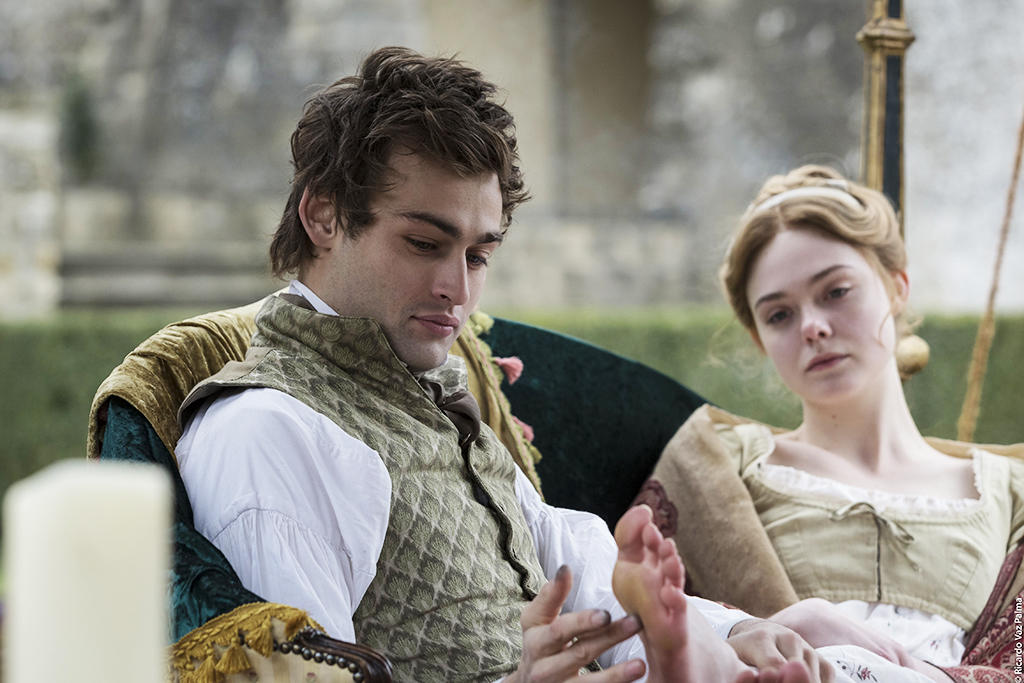


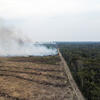


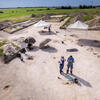

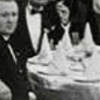
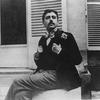
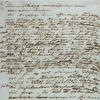
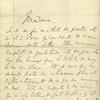
Comments
Log in, join the CNRS News community